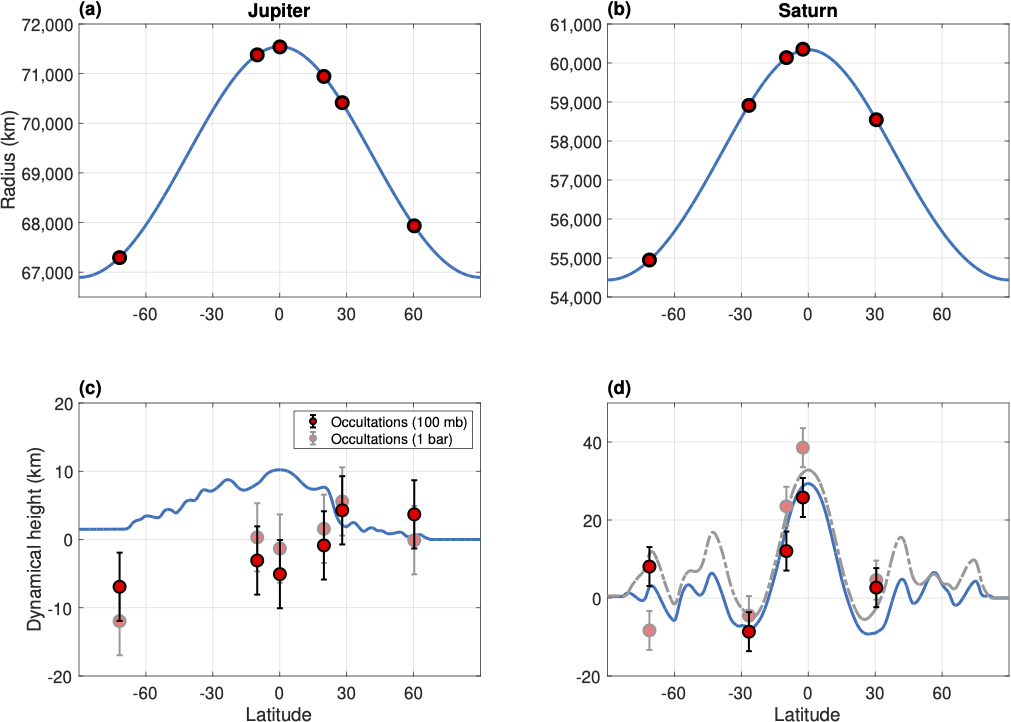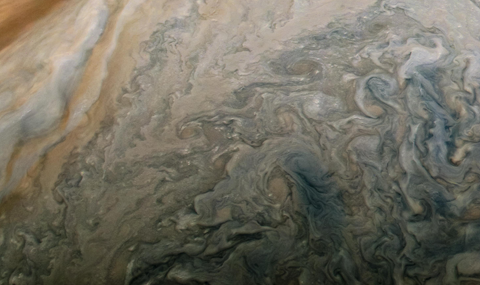The shape of the gaseous planets are predominantly set by the rotation rate, but are also affected by the density structure (manifested in the planet's gravity field), and the winds at the planet's outer surface. For both Jupiter and Saturn, the gravity fields have been measured to high accuracy by NASA's Juno and Cassini missions, respectively. This, together with the observed zonal winds, allows an accurate calculation of their shapes. Further constraints can be obtained from radio-occultation measurements, which give radially dependent profiles of density for specific spatial locations. Here we propose a new method for calculating the shape of the gas giants, based on an optimization of the wind latitudinal profile, decay structure, and the polar radius, given both gravity and radio-occultation measurements. We use thermal wind balance to relate the wind to the gravity measurements, and a shape model to relate the wind and polar radius to the radio-occultation measurements. We find that for Saturn there is a good match between the calculated shape and the radio-occultation measurements, while for Jupiter, no such correlation exists. We expect the new radio-occultation measurements to be performed by Juno, to help resolve the shape of Jupiter with a better accuracy.

(a,b) the full shape of Jupiter and Saturn at 100 mb, calculated using the mean values of the measured gravity harmonics, polar radius, and wind profiles. (c,d) the dynamical height contribution (blue), taken as the difference between the shape with winds and the shape without winds, and the radii from occultation measurements at 100 mb (red dots), and 1~bar (light-red dots). For the case of Saturn, shown also is the dynamical height resulting from the gravity-based wind (dashed-gray).


